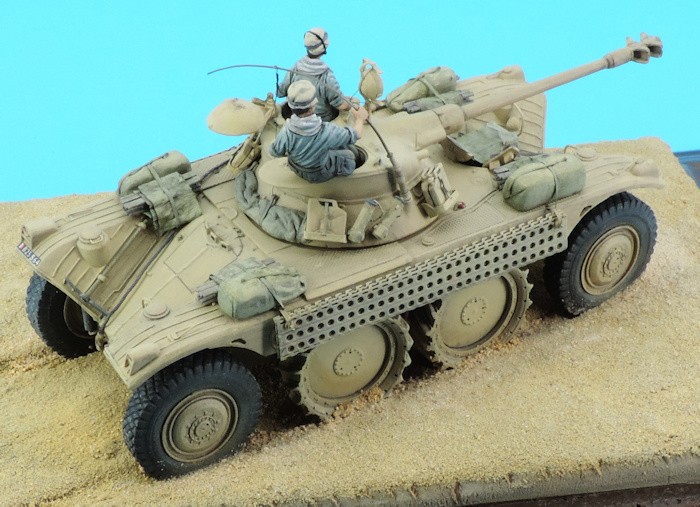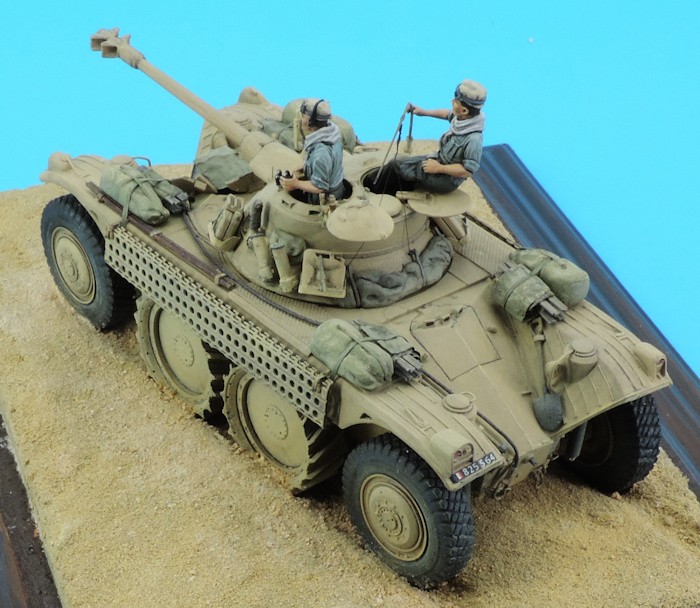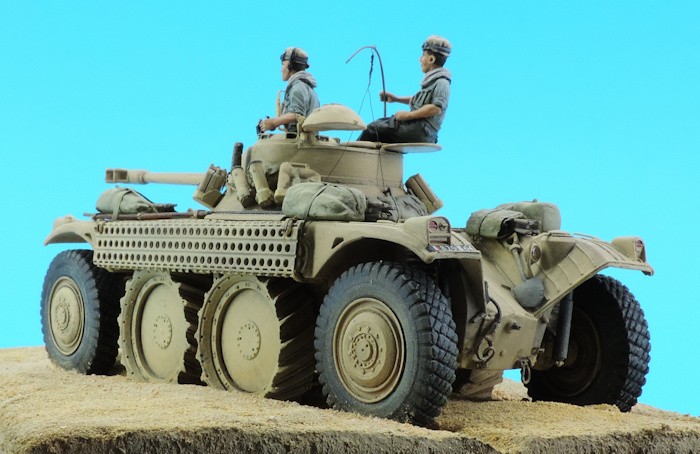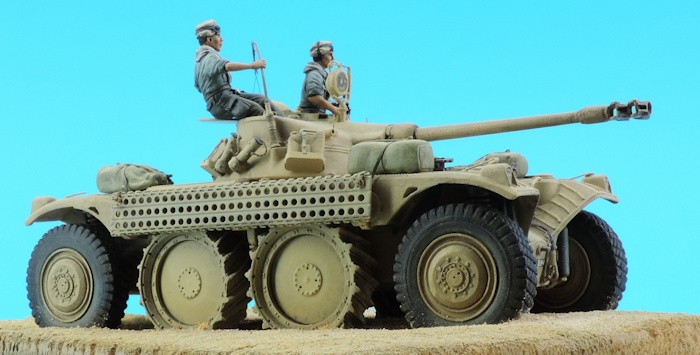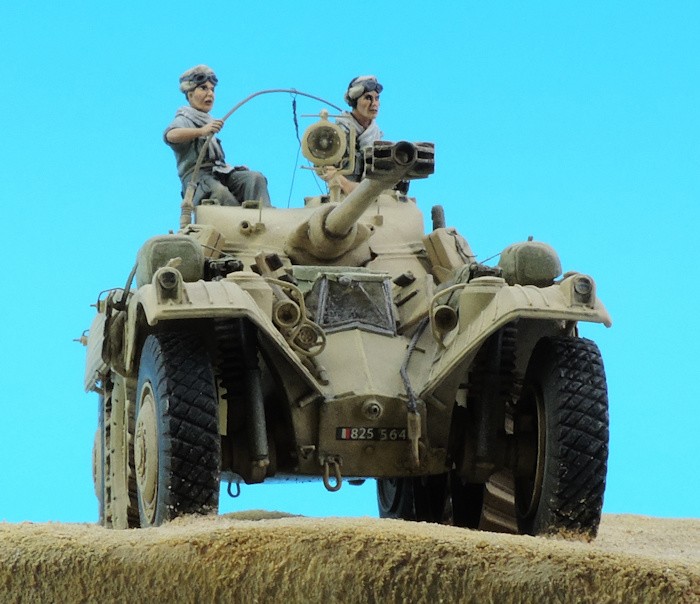Panhard EBR model of the 1st REC raid in southern Algeria
January 9, 2021
Our heritage through models
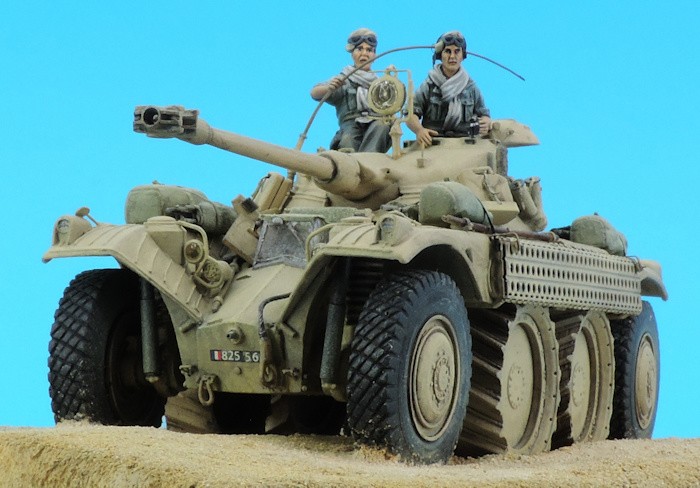
Model Gaso.line EBR Panhard by Thomas Seignon
Panhard EBR model by Thomas Seignon
A diorama of the Panhard EBR to illustrate the 1st REC's raid in Africa from January to March 1958.
In October 1957, the 1st Régiment Etranger de Cavalerie, based in Constantine, received its first EBRs, replacing the aging AM M 8 and AM M 20.
The arrival of the EBR gave the regimental staff the opportunity to "mark the occasion" by mounting an out-of-the-ordinary operation in the form of a 6,000 km round-trip raid, from the northern coast of Algeria to the Niger border in the south.
In October 1957, the 1st Régiment Etranger de Cavalerie, based in Constantine, received its first EBRs, replacing the aging AM M 8 and AM M 20.
The arrival of the EBR gave the regimental staff the opportunity to "mark the occasion" by mounting an out-of-the-ordinary operation in the form of a 6,000 km round-trip raid, from the northern coast of Algeria to the Niger border in the south.
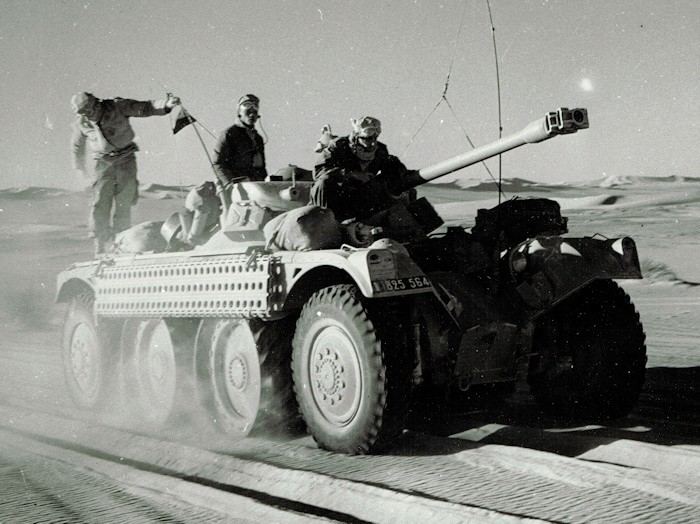
Copyright ECPAD
Such an adventure serves several purposes:
-To make its new equipment its own, by involving men and machines in an ordeal that was demanding for both.
-To demonstrate France's presence in the remotest parts of Algeria at a time when "events" were beginning to take on the proportions of what was not yet called a war.
-To communicate the Legion's ability to rise above the ordinary... And it's no coincidence that a team from the Etablissement Cinématographique des Armées was part of the raid
-To make its new equipment its own, by involving men and machines in an ordeal that was demanding for both.
-To demonstrate France's presence in the remotest parts of Algeria at a time when "events" were beginning to take on the proportions of what was not yet called a war.
-To communicate the Legion's ability to rise above the ordinary... And it's no coincidence that a team from the Etablissement Cinématographique des Armées was part of the raid
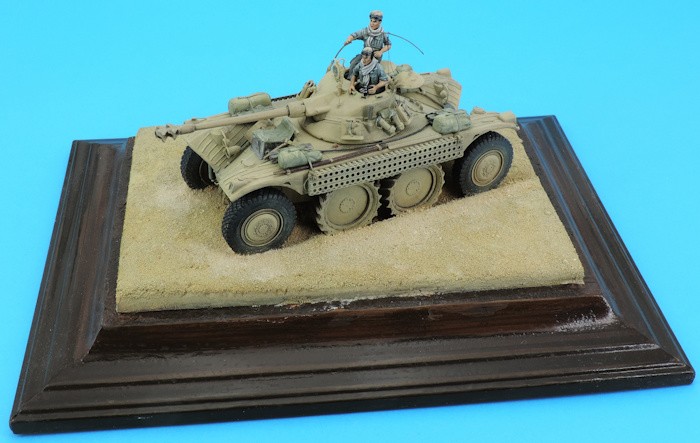
Model 1:48th at 13 cm
Gaso.line 1:48 scale model
The model comes from our Gaso.line range, with several modifications and improvements made by Thomas Seignon to accurately represent the specific features of this raid's machines.
Our models can be used as high-end promotional miniatures, gifts, educational objects, but also to tell the story of a brand or the story of a company!
Our work doesn't simply consist of reproducing an object, because before working on a new project, we try to understand the reason for its use and its history, so that we can understand our subject and all its details and reproduce them in the best possible way.
Our models can be used as high-end promotional miniatures, gifts, educational objects, but also to tell the story of a brand or the story of a company!
Our work doesn't simply consist of reproducing an object, because before working on a new project, we try to understand the reason for its use and its history, so that we can understand our subject and all its details and reproduce them in the best possible way.
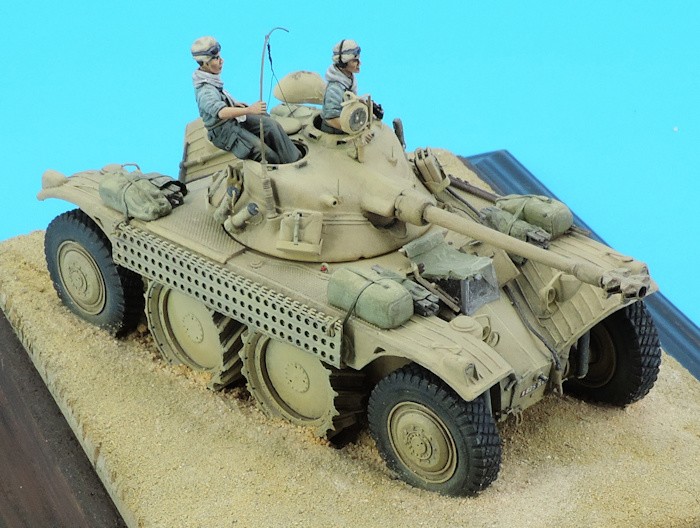
The 1st REC Panhard RBE raid in southern Algeria
Under the orders of Squadron Leader DOROT, the affair was carefully prepared. 6 EBRs were specially conditioned for the raid, with reinforced suspensions, sets of four crossing plates per vehicle, increased drinking water capacity, and integral tires for 3 of the vehicles. A Dodge protection section was also part of the trip, as was a technical support team on Berliet "Gazelle" and GLR 8 vehicles. Most of the technical support is provided by "regular" soldiers, including conscripts from the contingent. In all, some one hundred people are involved in this adventure.
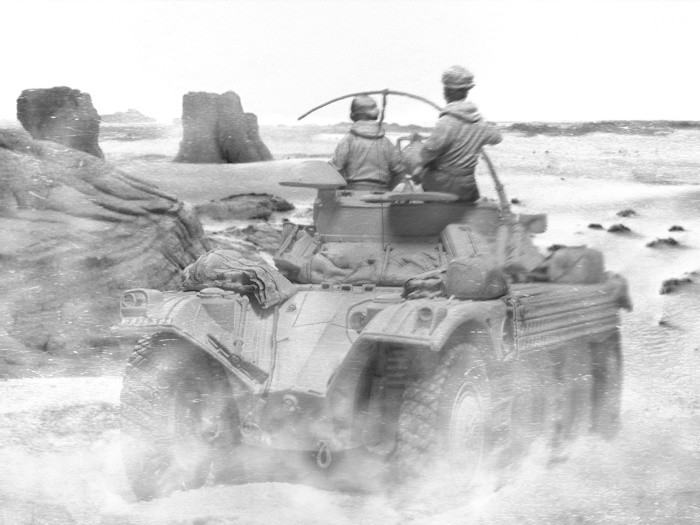
Copyright Thomas Seignon
The convoy set off in January 1958 from Constantine and reached Biskra by road, via Batna and the western Aures mountain range. It continued due south to Touggourt, without any major problems, except that the track followed the road and the maintenance of the vehicles required particular attention. The column then heads towards Ouargla, in the middle of the desert, and descends along the Hassi-Messaoud oilfields. Conditions become tougher not only for the equipment, which suffers from the sand, but also for the men, who are confronted with daily temperature variations of a good thirty degrees! Crossing the Grand Erg Oriental to Fort Flatters, our soldiers travel off-road through sumptuous landscapes. Arriving at Fort Flatters, a major maintenance session is required (an EBR engine needs changing).
Progress resumes towards Djanet (Fort Charlet), "navigating" from waterhole to waterhole, alternating between the mountainous sectors of the Tassili des Ajjer and areas of dunes and "fech fech", in which the EBR proves rather more at ease than the other vehicles in the convoy. From Djanet, we head southwest to Tamanrasset. We have to cross the Hoggar massif on winding mountain tracks that once again put men and machines to the test.
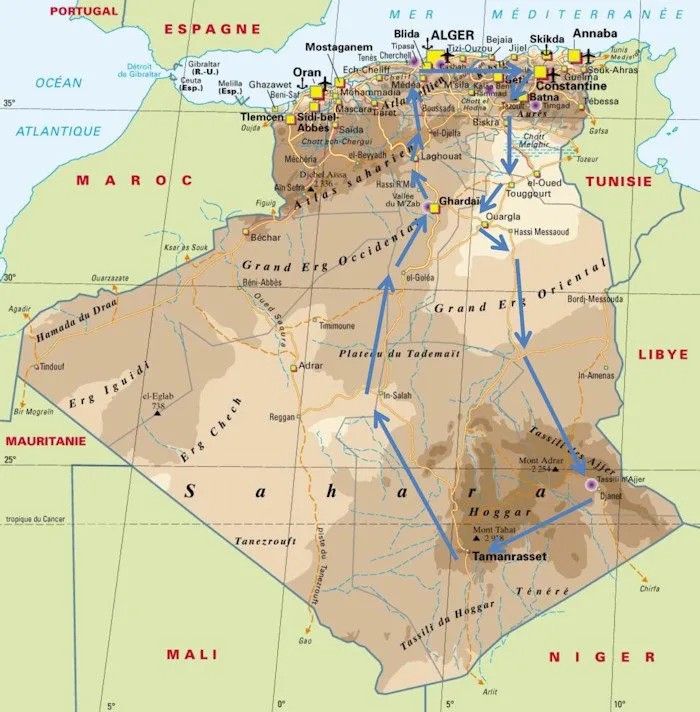
In Tamanrasset, the mechanics have to double their efforts to restore all the vehicles. At this stage, just under 500 km remain to reach the In Guezzam post on the Niger border. In the end, the convoy did not make it as far as In Guezzam, and it was decided to take the return route, heading north from Tamanrasset. It's back to the Hoggar, then across the Mouydir mountains to In Salah.
The ascent north continues on more or less marked tracks to El Goléa and then Ghardaia, where tarmac roads begin to reappear. From Laghouat, the column leaves the desert to reach the Atlas highlands, crossing Djelfa and Médéa to reach Blida. All that remains is to head east to Constantine and bring this human and technical adventure to a close at the end of March 1958.
